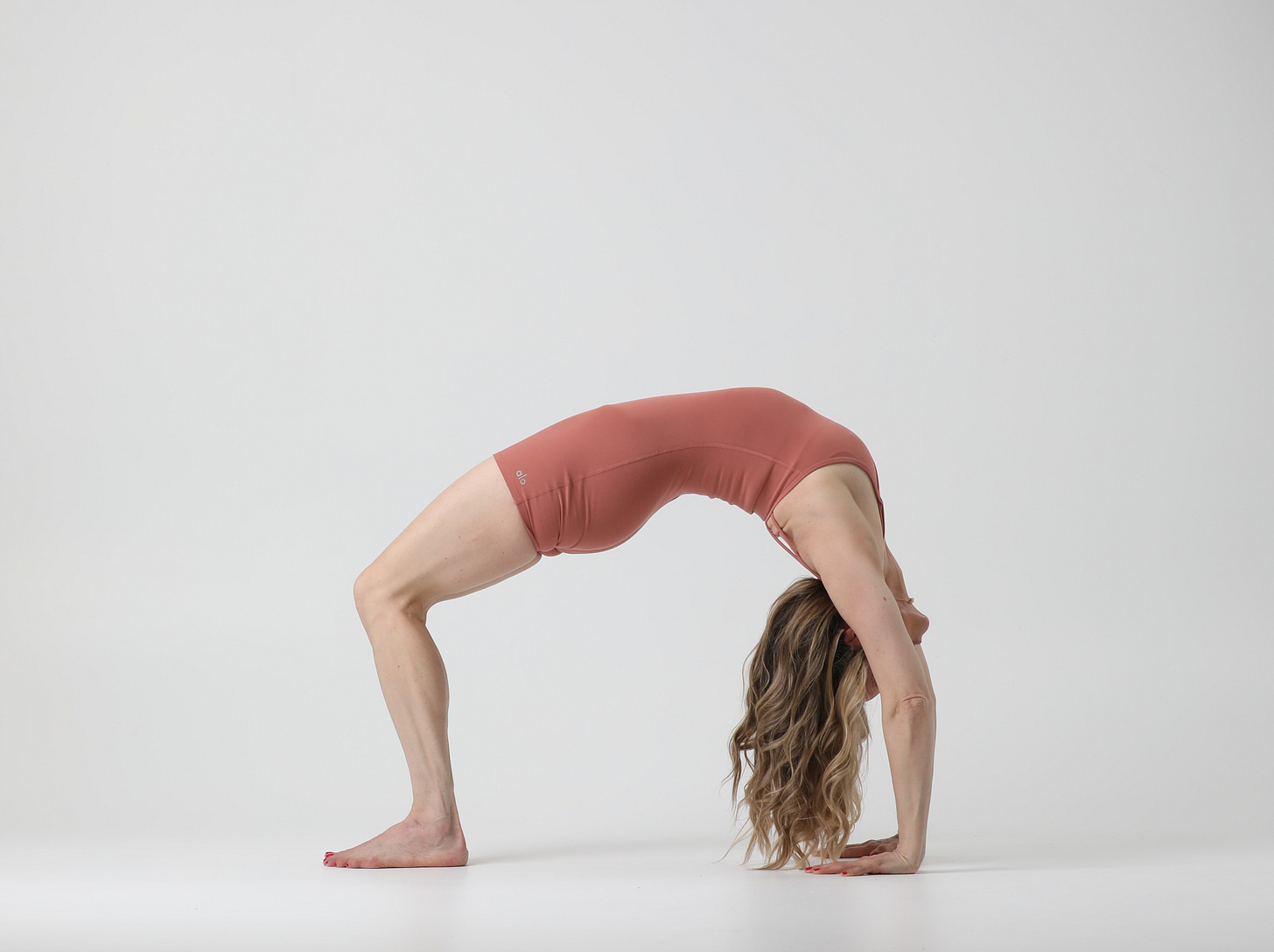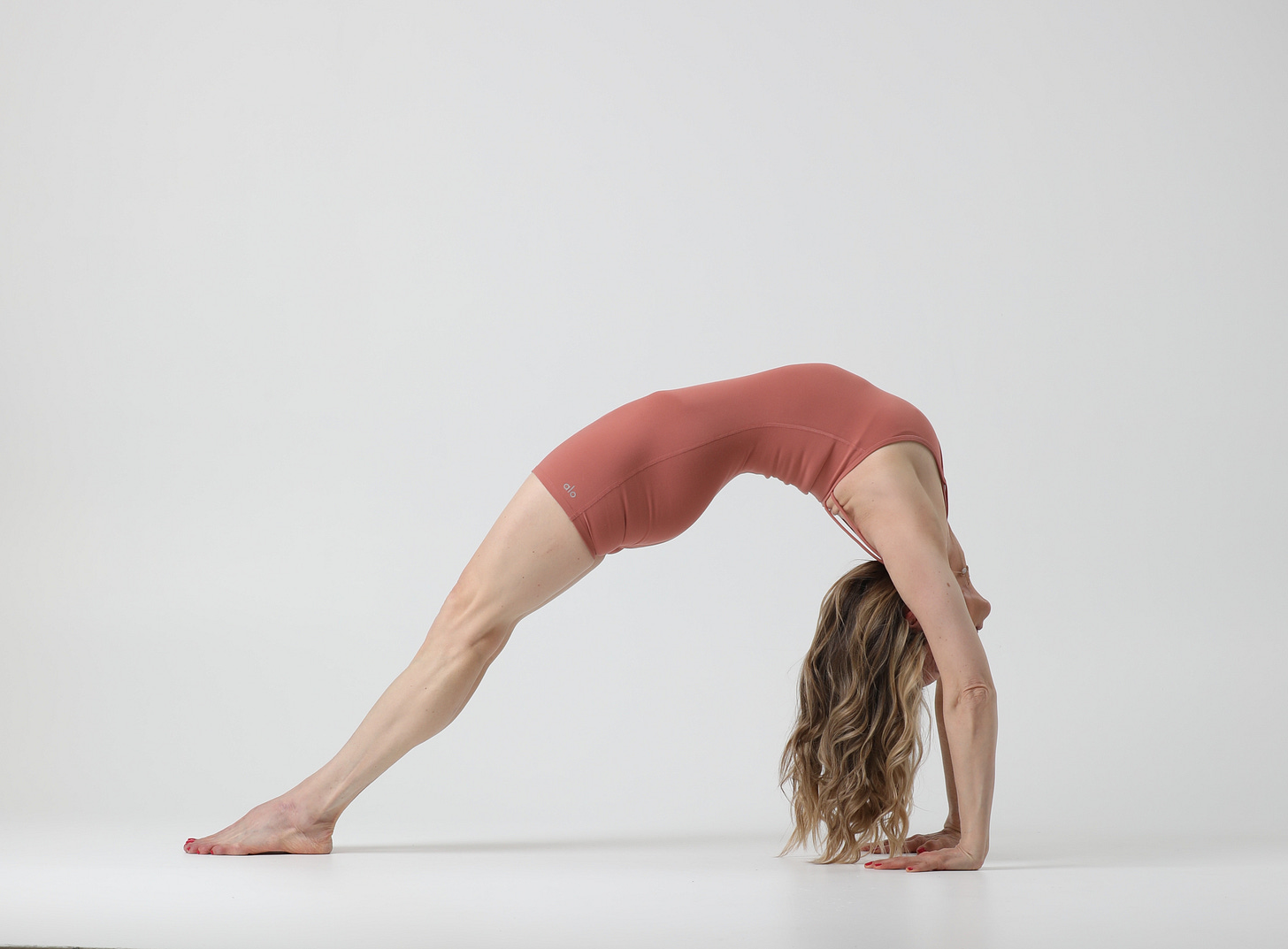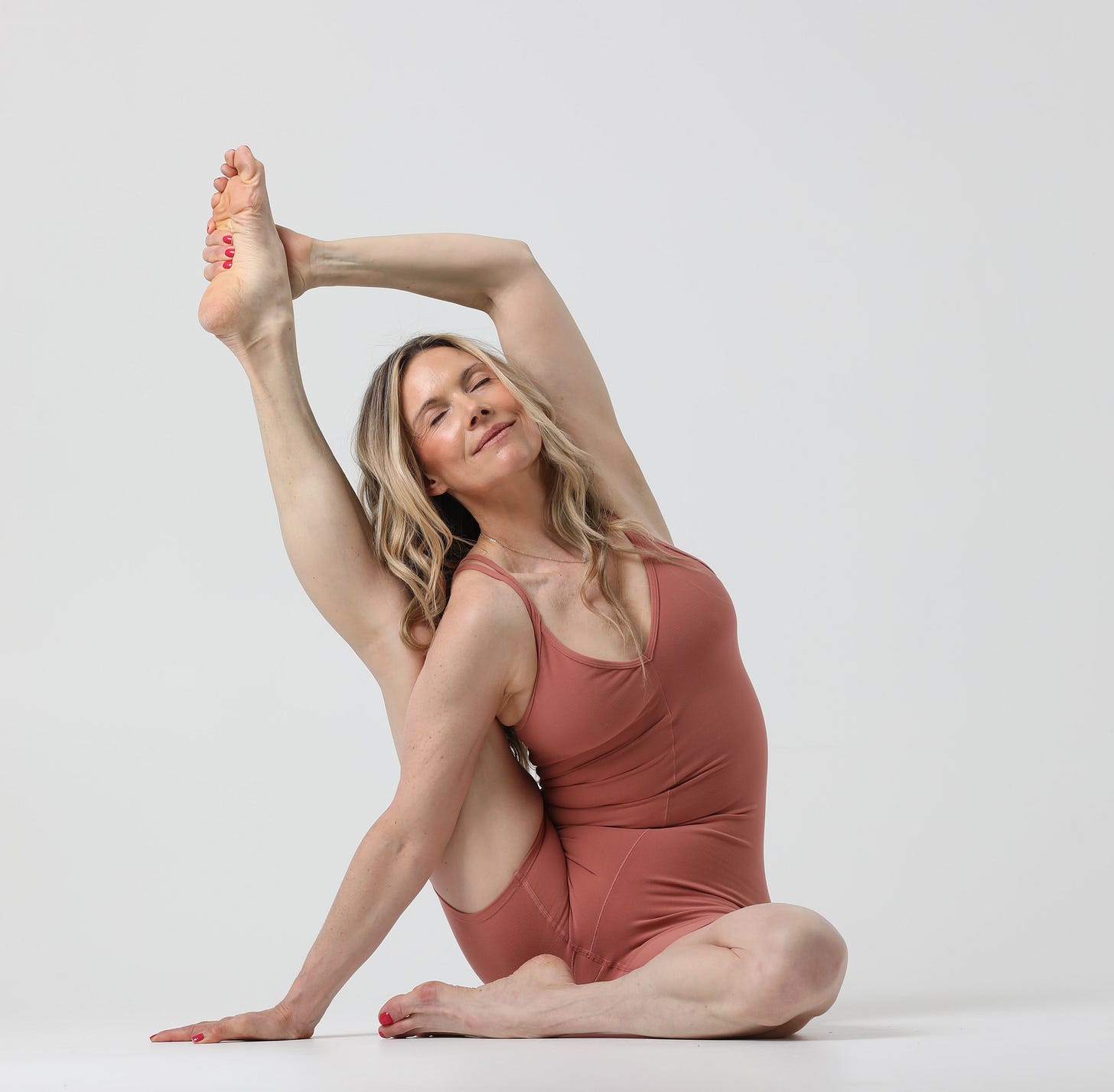Why Forward Folds Make Us Cry
And Backbends Make Us Afraid (And how to move forward with an open, courageous heart)
In yoga, we often say that forward folds open us up to the past. Paschimottanasana, the Sanskrit name for Seated Forward Bend, is loosely translated as “intense stretch of the western side.” In the yoga philosophy, the west represents the past, while the front body, the east, symbolizes the future.
Have you ever felt like crying in a forward fold? Maybe a memory surfaces from deep within. That’s totally okay, I do it all the time! In my Somatic Exercises for Dummies book, I talk about how our bodies store all of our history. When we release past events, traumatic or not, we grow through what we go through. I feel like each area of our body stores different things. I often say our hips are like the basement of our house and we store a lot of junk in the trunk.
Soma means body, and when we practice somatically, we use our body as a tool for self-discovery. We don’t do yoga to perfect poses or change who we are. We do it to know ourselves better and embrace all we are.
If forward bends connect us with our past, backbends open us to the future. The unknown can be terrifying. I had to lean into a lot of backbending during my recent life transitions, leaving my job, my apartment, and my marriage behind. It was exhilarating on one hand and frightening on the other. Backbending reminded me to stay open, to remain vulnerable, and to trust what was unfolding.
It makes me wonder if, as we get older, we become more fearful and anxious. As a kid, I could pop up into a full wheel with no problem. Later in life, sometimes I go into one and I feel like my chest is going to break open. Or maybe it’s that as children, we are better at living in the moment, so we aren’t thinking about the future as much, and therefore, backbends are safe and welcoming. Children are more confident and carefree. Adults tend to get in their way. Yoga is even more important as we age, so we can stay young at heart and not be afraid to keep growing and spreading our wings.
Backbends require courage, not contortion. They’re less about flexibility and more about receptivity. Below is a step-by-step somatic approach to help you practice backbends with integrity and care.
A Step-by-Step Guide to Practicing Backbends with Integrity
Step 1: Ground Yourself
Begin in constructive rest or Child’s Pose.
Breathe into the back body and connect with the earth beneath you.
Step 2: Awaken the Spine Gently
Move through Cat/Cow with slow, intentional breath.
Feel each segment of the spine and concentrate on keeping your core engaged as you open your heart in cow.
Step 3: Strengthen Before You Open
Bridge Pose to activate the glutes and hamstrings and feel your tailbone lengthening.
Locust Pose to awaken the back body and core.
Step 4: Heart Openers with Awareness
Try Cobra or Sphinx, asking: Can I feel the space behind my heart?
Add Low Lunge with cactus arms to open shoulders and chest.
Step 5: Deeper Backbends
Explore Camel, Bow, or Wheel if and when you’re ready.
Use props and variations. I love placing two blocks against a wall to place my hands on to feel an easier lift into full wheel.
Prioritize your breath over how deep you go. If it starts to feel held, back off.
Step 6: Integration is Everything
Close with a gentle twist or a forward fold, or even some ab work as a counter pose.
Rest in Savasana, one hand on your heart, the other on your belly.
With your hand on your belly, inhale into it and repeat: OPEN in your mind. With your hand on your heart, exhale out of that space and repeat in your mind: FREE.
Yoga is not a performance, but instead a practice of presence. We don’t fold forward to hide in the past, or backbend to chase the future. We do these movements to meet ourselves more honestly, here and now.
Forward folds can reveal the weight we still carry. Backbends ask us to lead with the heart, even when it's vulnerable. Together, they form a full conversation with our inner world.
Somatic practice reminds us that the body is not just a vessel; it’s the story. When we move with intention, we can soften, heal, and expand into new possibilities.
INHALE OPEN
EXHALE FREE
Whether you're folding inward or reaching forward, let your practice be a reminder:
You are whole.
You are evolving.
And everything you need is already within you.
After your practice or during this week, as you meditate, come back to one hand on the heart and one hand on the belly and in your mind repeat, inhale open, exhale free.
I'd love to hear from you:
What emotions come up for you in backbends or forward folds?
Have you ever noticed a shift after a somatic sequence?
Feel free to share your reflections in the comments or hit reply if you're reading via email, I read every one.
Keep reading with a 7-day free trial
Subscribe to Kristin McGee Movement to keep reading this post and get 7 days of free access to the full post archives.





